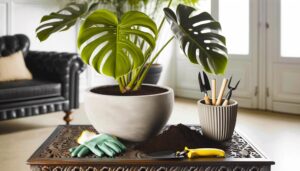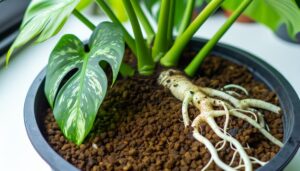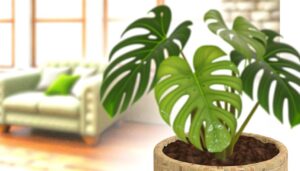Highly Coveted Aroid Monstera Obliqua
You'll adore the Monstera obliqua, a highly sought-after aroid prized for its noticeably fenestrated, paper-thin leaves. Originating from Central and South America's tropical rainforests, its foliage shows remarkable phenotypic plasticity.
Ensuring successful growth means providing bright, indirect light and maintaining high humidity (80-90%). Misidentification is common, often confused with Monstera adansonii, but genuine Monstera obliqua features delicate, intricate venation patterns.
It's crucial to use well-draining soil rich in organic matter and water when the top inch is dry, avoiding waterlogging. Want to master its care? Discover the intricacies and keep your Monstera thriving.
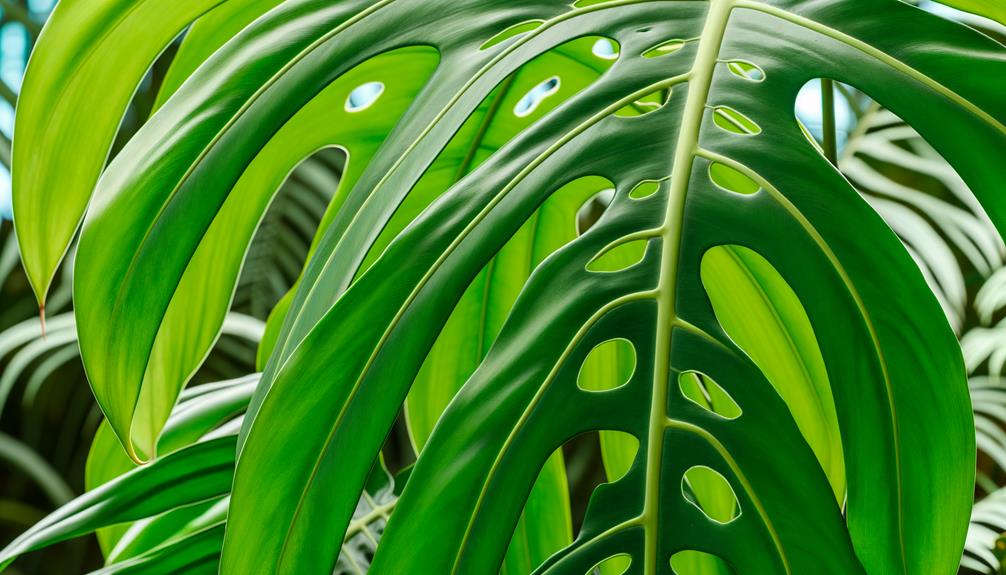
Key Takeaways
- Monstera obliqua is highly sought after due to its delicate, highly perforated leaves with up to 90% empty space.
- It originates from tropical rainforests in Central and South America, thriving in high humidity and indirect light.
- Genuine Monstera obliqua is rare and often misidentified as Monstera adansonii in nurseries.
- Requires well-draining soil rich in organic matter and should be watered when the top inch of soil is dry.
- Monstera obliqua has thin, paper-like leaves and grows slower than Monstera adansonii.
Identification and Origins

Monstera obliqua, a rare and highly sought-after aroid, is distinguished by its delicate, perforated leaves and originates from the tropical rainforests of Central and South America.
You can identify this plant by its significantly fenestrated foliage, which exhibits a lace-like appearance due to the large perforations. The leaves are typically thin and delicate, contributing to its fragile nature.
Monstera obliqua thrives in humid, shaded environments with consistent moisture levels, reflecting its natural habitat conditions. It's important to note that this species is often confused with Monstera adansonii; however, the latter has thicker leaves and fewer perforations.
Understanding its precise identification and origins ensures you can provide the best care and environment this rare aroid demands.
Unique Features
Given its delicate, fenestrated foliage, Monstera obliqua stands out with several unique features that set it apart from other aroids.
The most distinctive characteristic is its highly perforated leaves, which can consist of up to 90% empty space, providing an ethereal appearance.
You'll notice the leaves are thin and paper-like, contributing to their fragile nature.
The plant also exhibits remarkable phenotypic plasticity, adapting its leaf morphology based on environmental conditions.
Additionally, Monstera obliqua possesses adventitious roots, which allow it to anchor and climb efficiently.
Its slow growth rate and rarity further enhance its allure among collectors.
You'll appreciate the intricate venation pattern, which not only supports the leaf structure but also adds to its aesthetic appeal.
Growing Conditions

To cultivate Monstera obliqua successfully, make sure it receives bright, indirect light and maintains high humidity levels around 80-90%.
This plant thrives in a well-draining soil mix rich in organic matter, which facilitates proper aeration and moisture retention. Keep the temperature between 65-80°F (18-27°C) to mimic its native tropical environment.
Water the plant when the top inch of soil feels dry, ensuring it remains consistently moist but not waterlogged. Use distilled or rainwater to avoid mineral buildup.
Fertilize monthly during the growing season with a balanced, water-soluble fertilizer diluted to half strength. Prune occasionally to manage growth and remove any dead or yellowing leaves to encourage healthy development.
Common Misconceptions
Many enthusiasts mistakenly believe that Monstera obliqua and Monstera adansonii are the same plant due to their similar leaf perforations. However, these species have distinct characteristics. Monstera obliqua features extremely delicate, paper-thin leaves with extensive fenestrations, making it rarer and more delicate.
In contrast, Monstera adansonii has thicker, more resilient leaves with fewer holes.
Another misconception is the availability of Monstera obliqua. You might think it's easy to find, but true Monstera obliqua is exceptionally rare in cultivation. Often, nurseries mislabel Monstera adansonii as Monstera obliqua, leading to further confusion. Additionally, Monstera obliqua grows markedly slower than Monstera adansonii, making genuine specimens even harder to come by.
Understanding these differences is crucial for proper identification.
Care Tips
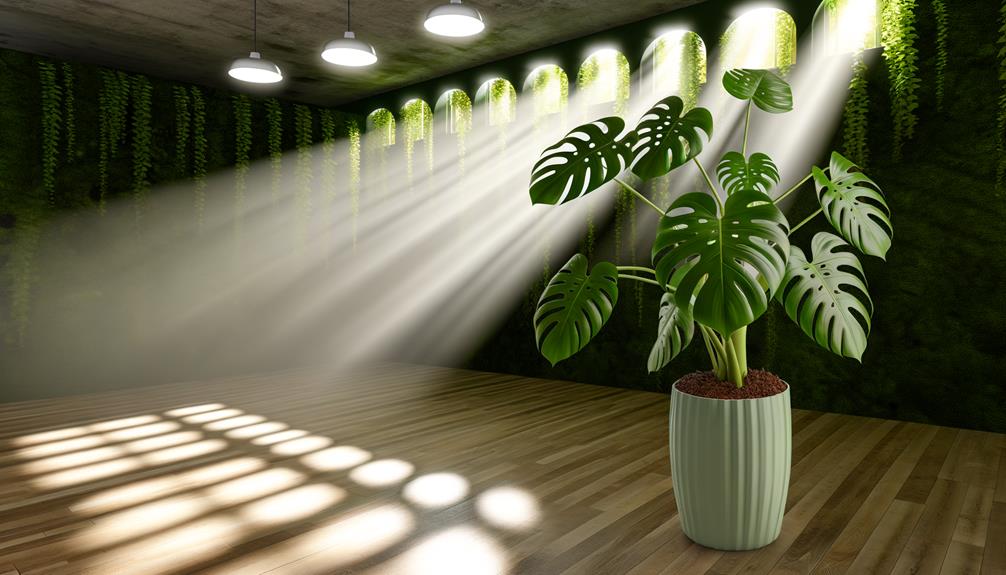
Caring for Monstera obliqua demands meticulous attention to humidity levels, consistent watering, and indirect sunlight to replicate its native tropical habitat. You should uphold humidity around 80-90%, using a humidifier if needed. Regularly mist the leaves to mirror the plant's natural surroundings. Water the plant when the top inch of soil feels dry, making certain you don't let it sit in water to prevent root rot.
Position your Monstera obliqua in bright, indirect light; direct sunlight can damage its fragile leaves. Utilize a well-draining potting mix abundant in organic matter to support robust root development. Fertilize monthly during the growing season with a balanced, water-soluble fertilizer to encourage luxuriant growth. Regular monitoring will guarantee your plant thrives.
Conclusion
To sum up, while some argue that every Monstera obliqua is simply a Monstera adansonii, genetic analysis disproves this theory.
The intricate fenestrations and paper-thin leaves of the obliqua are unique, evoking a sense of awe.
By providing appropriate humidity, indirect light, and careful watering, you'll sustain its delicate beauty.
Understanding and debunking these misconceptions not only elevates your botanical knowledge but also deepens your appreciation for this extraordinary aroid.
Your journey with Monstera obliqua has just begun.

